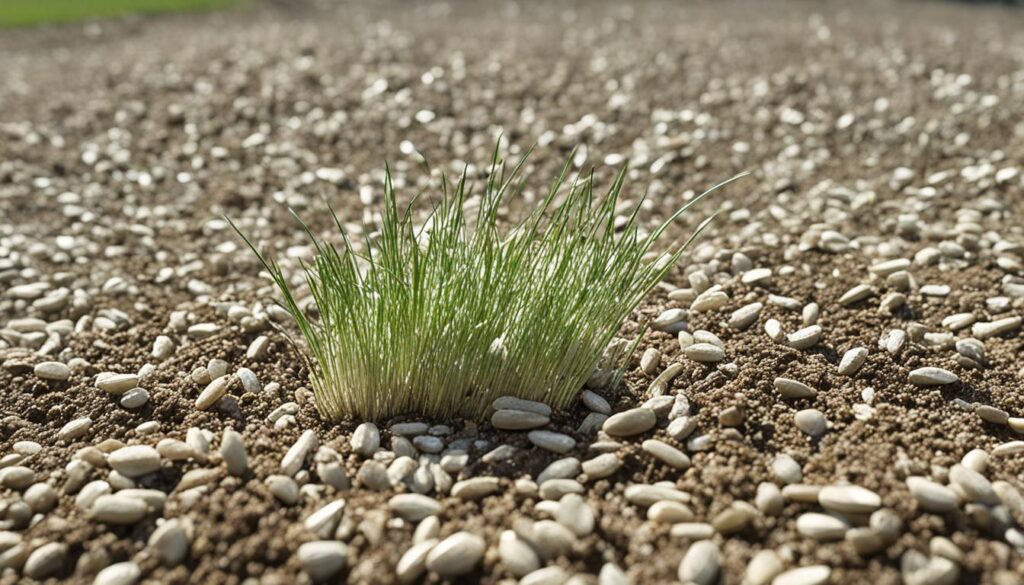Did you know 85% of homeowners use the wrong fertilizer ratio in fall? This fact shows how vital it is to know the best fertilizer ratio for fall. As leaves turn, your grass gets ready for winter, making fall fertilization key for a green lawn next spring.
Getting the lawn fertilization schedule right is crucial for a strong root system. Picking the right fall lawn fertilizer means you’re looking after your yard’s health and look. Let’s explore why fall fertilization is important and how to pick the best mix for your lawn.
Timing is crucial in fall lawn care. Cool-season grasses do well with fertilizer from September to November. Warm-season grasses get a boost from an early September feeding. The right fertilizer ratio for fall depends on your grass type and soil needs.
Key Takeaways
- Fall fertilization strengthens grass roots for spring growth
- Ideal fertilizer ratios vary by grass type and season
- Cool-season grasses benefit from late fall fertilization
- Warm-season grasses need early fall fertilizer application
- Soil testing helps determine specific nutrient needs
- Proper timing and application prevent overfertilization
Understanding Fall Fertilization for Lawns
Fall lawn care is vital for a healthy yard. Proper fertilization in fall helps your grass recover from summer stress and gets ready for winter. Let’s see why fall fertilization is important and how to do it right.
The Importance of Fall Fertilization
Fall fertilization is crucial for lawn health. It helps grass store nutrients for winter and boosts root growth. This leads to a greener lawn in spring and better resistance to pests and diseases.
Benefits of Fall Fertilizer Application
Applying fertilizer in fall has many benefits:
- Improved winter color
- Enhanced spring green-up
- Increased root development
- Replenished soil nutrients
Timing Your Fall Fertilizer Application
It’s important to know when to fertilize your lawn in fall. Early October is usually the best time. Apply fertilizer when growth slows, but before the ground freezes. For the best results, schedule your fall lawn care in the morning or early evening to avoid the heat.
| Fertilizer Type | Recommended Formula | Application Time |
|---|---|---|
| Early Fall | 20-8-8 | Early October |
| Late Fall | 13-25-12 | 2-3 weeks before ground freezes |
Fall fertilization is all about balance. The right timing and formula will help your lawn succeed through winter and into spring.
Best Lawn Fertilizer Ratio for Fall
Choosing the right fertilizer ratio for fall is key to getting your grass ready for winter. The ideal mix balances nitrogen, phosphorus, and potassium for a healthy lawn.
Ideal NPK Ratios for Fall Fertilizers
Fall fertilizers often have more potassium to help your lawn survive the cold. A good mix for fall is 24-4-12. This gives your lawn enough nitrogen for growth, phosphorus for strong roots, and potassium to fight diseases.
| Nutrient | Percentage | Purpose |
|---|---|---|
| Nitrogen (N) | 24% | Promotes growth |
| Phosphorus (P) | 4% | Enhances root development |
| Potassium (K) | 12% | Improves winter hardiness |
Importance of Nutrients in Fall
Nitrogen is key for keeping your grass healthy in fall. Use 1 pound of soluble nitrogen or 1.5-2 pounds of slow-release per 1,000 square feet. Phosphorus should be limited due to environmental issues. Potassium is crucial for cold tolerance and fighting diseases.
Slow-Release vs. Quick-Release Fertilizers
Slow-release fertilizers feed your lawn over a longer period. They’re great for a single application, like a 30-0-12 blend with 60% slow release. Quick-release fertilizers work faster but you’ll need to apply them more often. A 22-0-10 mix with 23% slow release might need monthly reapplication.
Always test your soil before fertilizing. This makes sure you’re giving your lawn exactly what it needs without overdoing it. Overfertilizing can hurt your grass and the environment.
Choosing the Right Fall Fertilizer for Your Grass Type
Choosing the right fall fertilizer is key for your lawn’s health. Cool season grasses need different nutrients than warm season ones. The timing of when you apply these nutrients also matters.
Cool season grasses like Kentucky bluegrass or fescue do well with high-nitrogen fertilizers. Use a 20-8-8 or 24-0-12 mix early in fall to help leaves grow. Then, in late October, add a 13-25-12 mix to help roots grow strong before winter.
Warm season grasses, such as Bermuda or Zoysia, require a different strategy. Give them a balanced or phosphorus-rich fertilizer in early September. This helps their roots get ready for the cold weather.

Getting a soil test is vital to know what your lawn needs. It helps you pick the best N-P-K ratio. If you don’t test, a 4-1-2 ratio fertilizer like 16-4-8 is a good all-around choice.
| Grass Type | Early Fall NPK | Late Fall NPK |
|---|---|---|
| Cool Season | 20-8-8 or 24-0-12 | 13-25-12 |
| Warm Season | 16-4-8 | Not recommended |
When applying fertilizer, use about 1/2 pound of nitrogen per 1,000 square feet. This approach ensures your lawn gets the right amount of nutrients without risking damage. Picking the right fall fertilizer helps your lawn bounce back strong in spring.
Application Techniques for Fall Lawn Fertilizers
Getting fall lawn fertilizer right is key for great results. We’ll look at the best ways to apply it, common mistakes to dodge, and the right tools for the task.
Proper Application Methods
Timing is everything when applying fall lawn fertilizer. Do it from mid-September to mid-October, 6-8 weeks before the first freeze for cool-season grasses. Use a spreader and set it right to spread the fertilizer evenly over 1,000 square feet. Walk at a steady pace, making sure to overlap your passes for full coverage.
Avoiding Common Fertilizer Application Mistakes
Don’t spread fertilizer unevenly. To avoid this, split your application and go in different directions. Don’t overdo it, as this can harm your lawn. Water your lawn after applying to help the nutrients soak in. In areas without phosphorus in fertilizers, choose ones without it, like 24-0-12 or 21-0-21.
Equipment Needed for Fall Fertilizer Application
You need a good fertilizer applicator for even spreading. Spreaders are best for granular products, while sprayers work for liquids. Make sure your equipment is set right for the right amount of fertilizer. Clean your spreader well after use to prevent rust during the winter.

| Fertilizer Type | Recommended Ratio | Benefits |
|---|---|---|
| Slow-release | 24-0-12 or 21-0-21 | Consistent nourishment, reduced leaching |
| With phosphorus | 24-5-10 or 20-5-20 | Extra health protection for lawns |
| Liquid/soluble | Similar NPK ratios | Quick absorption, may need multiple applications |
Conclusion
Fall lawn care is key to keeping your yard healthy and green all year. Choosing the best lawn fertilizer ratio for fall depends on your grass type and soil needs. Cool-season grasses do well with a 20-0-10 ratio, while warm-season grasses prefer a 10-0-20 blend.
Timing is crucial for fall fertilization. Apply your fertilizer in mid to late September or October, before the first frost. This timing helps your lawn absorb nutrients well, leading to stronger roots and better disease resistance. Following these tips will help your lawn do well through winter and into spring.
Proper application is also vital in fall lawn care. Avoid over-applying fertilizer to prevent nutrient runoff and environmental harm. Use the right tools and follow the recommended amounts. Regular soil tests can help you adjust your fertilizing, making sure your lawn gets exactly what it needs.
By focusing on fall fertilization and picking the right products, you’re investing in a lush, healthy lawn. A great fertilizer for grass often starts with good fall care. Your hard work will show in a beautiful, strong yard that everyone will admire.
FAQ
Why is fall fertilization crucial for lawns?
Fall fertilization makes plants’ roots strong. This gives them a good base for spring growth. It helps lawns recover from summer stress and stores up nutrients for winter. This leads to better winter color, greener spring, deeper roots, and healthier soil.
What are the benefits of fall fertilizer application?
Fall fertilizer makes lawns look better in winter and spring. It helps roots grow deeper and soil get richer.
When is the best time to apply fall fertilizer?
The best time to fertilize depends on your climate and grass type. Warm-season grasses do well in early fall. Cool-season grasses are better in late fall.
Apply fertilizer when your grass grows slower, before it freezes, and after a light rain.
What is an ideal NPK ratio for fall fertilizers?
An ideal fall fertilizer has an NPK ratio of 24-4-12 with IBDU. Nitrogen is key, with 1 pound of soluble or 1.5-2 pounds of slow-release per 1,000 square feet recommended.
What are the differences between slow-release and quick-release fall fertilizers?
Slow-release fertilizers feed your lawn over time. Quick-release fertilizers work fast but don’t last as long.
How do I choose the right fall fertilizer for my grass type?
For cool-season grasses, use a fertilizer with lots of nitrogen in early fall. Then, in late October or early November, use a 13-25-12 formula to help roots grow.
Warm-season grasses do well with a balanced or phosphorus-heavy fertilizer in early September. This helps roots get stronger for winter.
What are the proper application methods for fall lawn fertilizers?
Spread granular or liquid fertilizers evenly with a spreader or sprayer. Water your lawn after to help the nutrients soak in. Make sure your spreader or sprayer is set right to apply the right amount.
How can I avoid common fertilizer application mistakes?
Avoid giving your lawn too much fertilizer, which can harm it. Use mulch from your lawn clippings as a natural way to feed your lawn. Test your soil to find out exactly what nutrients your lawn needs.



